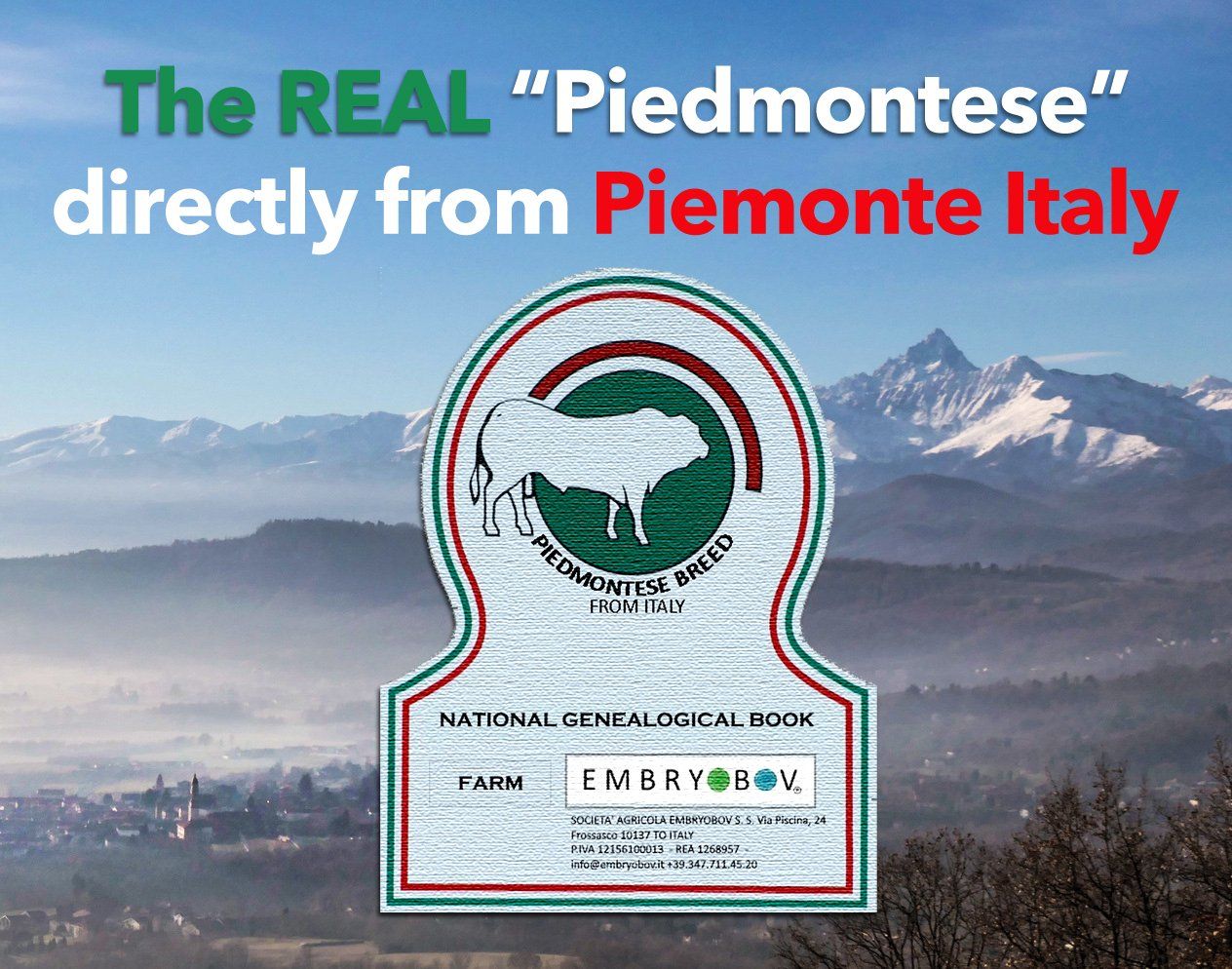
Embryos and Donors Available Piedmontese Breed
EMBRYOBOV is available for production exclusively in breeding of NATURAL EMBRYOS ("in vivo")
- The embryos are produced naturally and entirely in breeding.
- Donors are mares or heifers from your own breeding farm that are chosen for superovulation only after rigorous health and gynecological tests.
- We pay particular attention to the selection of donors and bulls for their ease of birth index to obtain embryos that can be safely used on recipients of any breed and also on heifers.
- Selected embryos are available according to the breeding line, taken from donors with a high genetic value and inseminated with bulls with a high calving ease index.
- You can choose from the breeders available at the farm, arrange a mating, and reserve the embryos according to your requests by selecting the available donors button and calling us.
- Only the highest quality embryos are collected and frozen.
- We can ship our embryos to any country in the world and have a good number of embryos ready for the USA, South America and Australia.

The Piedmontese Breed
The Piedmontese cattle breed is a native breed of Piedmont, but with very ancient origins. From archaeological finds, rock inscriptions and fossil remains it is assumed that the current Piedmontese cattle breed derives from a cross between the Aurochs type cattle breed already present in the Pleistocene in the northwestern areas of present-day Piedmont and a breed of Zebu originating from the Indian continent (western Pakistan) that migrated to Europe 25,000/30,000 years ago.
Characteristics
The breed is well-adapted to being raised at a variety of altitudes, from plains to high-altitude pastures, resulting in a long lifespan. Due to its hardiness and strength, this breed was once used for draft and milk production. Compared to other beef breeds, milk production is higher, and often, once the calf's needs are met, the farmer uses the milk to produce typical regional cheeses such as Toma, Castelmagno, and Raschera.
With the development of agricultural mechanization, attention was paid to prioritizing the animals' aptitude for meat production and, starting in the 1960s, to identifying the specimens most suited to this purpose. A type of cattle (part of the Piedmontese breed) was therefore selected, the so-called "fassona" or double-rumped.
This unique characteristic of the Piedmontese breed, known as muscular hypertrophy, double rump, or Fassone, is due to a natural mutation in the gene encoding myostatin, a protein that limits muscle growth. The spread of this mutation was then selected by breeders and the Piedmontese breed bull selection center "ANABORAPI" since the mid-twentieth century, to a point where almost all animals in the stud book possess this trait, and a very high percentage of the breed as a whole. Meat quality is therefore linked to this particular morphological characteristic, expressed by muscular hypertrophy in the thighs and buttocks, but almost throughout the body, and by a complex of anatomical features (thin skin close to the muscles, small head, long trunk, short and thin tail, slender but robust shins), which make the Piedmontese cattle one of the best breeds in the world for meat production. Furthermore, the almost total absence of subcutaneous fat makes the meat of this breed tender and lean, and particularly renowned. The characteristics of the meat, its yield at slaughter, its adaptation to the most marginal terrains, its longevity, and its hardiness have meant that this breed has gradually been raised in other Italian regions as well, and in 2017 it was the third most widely raised cattle breed in Italy.
In the late 1980s, a local cattle breed, now known as the North American Piedmontese, was developed in Canada from cattle originating in Piedmont. This breed later spread to the United States. In the late 1990s, a project was launched to improve the quality and quantity of beef production in China, as the Piedmontese breed's potential for improving the final product in both first-generation and three-way crossbreeding (see ART Bosticco) was widely recognized, so much so that in China the breed is valued primarily for its role as a crossbreed. Statistical analyses of Piedmontese semen sales clearly demonstrate that many countries (Morocco, Venezuela, Ecuador, and the United States) value this breed, and the potential for spreading the breed through the export of semen and embryos is an avenue worth exploring both by institutions and private individuals.







